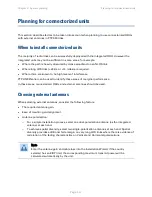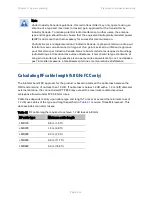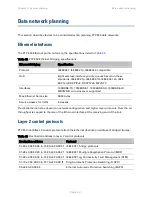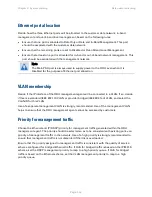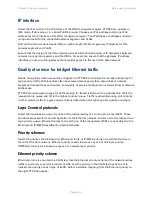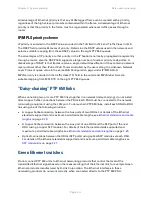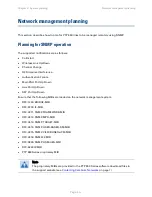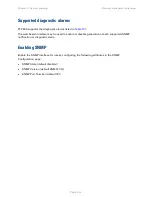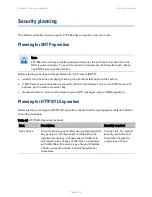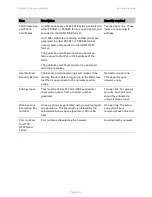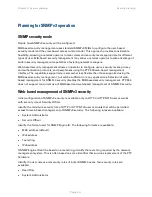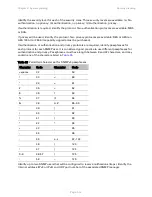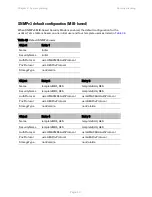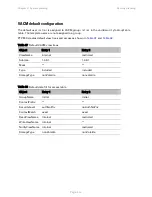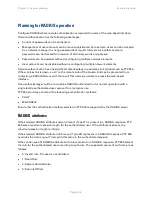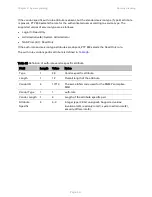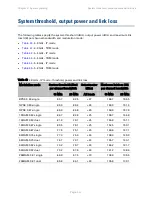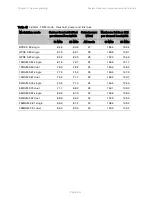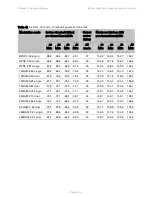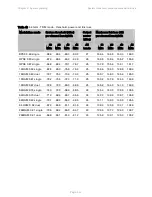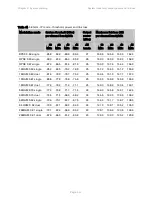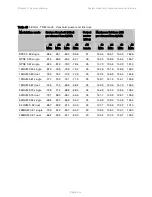
Chapter 3: System planning
Security planning
Planning for RADIUS operation
Configure RADIUS where remote authentication is required for users of the web-based interface.
Remote authentication has the following advantages:
•
Control of passwords can be centralized.
•
Management of user accounts can be more sophisticated. For example; users can be prompted
by a network manager to change passwords at regular intervals. As another example,
passwords can be checked for inclusion of dictionary words and phrases.
•
Passwords can be updated without reconfiguring multiple network elements.
•
User accounts can be disabled without reconfiguring multiple network elements.
Remote authentication has one significant disadvantage in a wireless link product such as PTP 650.
If the wireless link is down, a unit on the remote side of the broken link may be prevented from
contacting a RADIUS Server, with the result that users are unable to access the web-based
interface.
One useful strategy would be to combine RADIUS authentication for normal operation with a
single locally-authenticated user account for emergency use.
PTP 650 provides a choice of the following authentication methods:
•
CHAP
•
MS-CHAPv2
Ensure that the authentication method selected in PTP 650 is supported by the RADIUS server.
RADIUS attributes
If the standard RADIUS attribute session-timeout (Type 27) is present in a RADIUS response, PTP
650 sets a maximum session length for the authenticated user. If the attribute is absent, the
maximum session length is infinite.
If the standard RADIUS attribute idle-timeout (Type 28) is present in a RADIUS response, PTP 650
overrides the Auto Logout Timer with this value in the authenticated session.
If the vendor-specific RADIUS attribute auth-role is present in a RADIUS response, PTP 650 selects
the role for the authenticated user according to auth-role. The supported values of auth-role are as
follows:
•
0: Invalid role. The user is not admitted.
•
1: Read Only
•
2: System Administrator
•
3: Security Officer
Page
3-39

